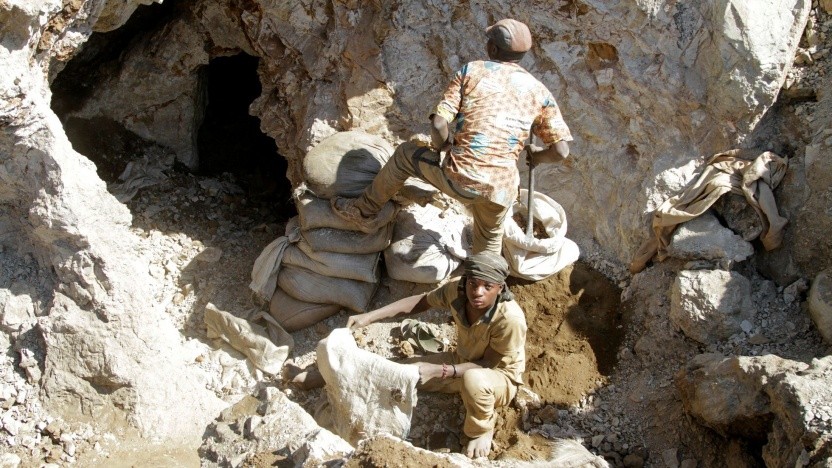For the construction of electric cars Raw materials are needed that come from countries where inhumane working conditions often prevail. Some manufacturers are endeavoring to use fairly mined raw materials. But that’s not easy, as the example of Kobalt shows.
A report
from
Werner Pluta
January 18, 2019, 12:02 pm

Workers in an artisanal cobalt mine in the Congo: “We only know roughly how the streams are.”
(Photo: Kenny Katombe / Reuters)
Only fair cobalt mined for electric cars from Munich: BMW announced in December, in future only use cobalt, which was won under professional conditions. Most cobalt comes from the Democratic Republic of the Congo, where the raw material is mined under inhumane conditions. Nevertheless, it is possible to use only fair-degraded cobalt, says geologist Uwe Näher in conversation with Golem.de.
Content:
Where is the cobalt?
The demand for cobalt is increasing
Closer works at the Federal Institute for Geosciences and Natural Resources (BGR) and is the head of the project “Support for the introduction and implementation of a certification system for mineral raw materials in the DR Congo”. Since 2009 BGR has been responsible for certifying the mining of conflict minerals. “We do mine inspections and audits, and through these audits combined with training, we try to get the mines to meet minimum production standards, and if that happens and improvements are made, we will certify them.”
In the conflict minerals, this succeeds quite well: 80 percent came from certified mines. Conflict minerals include gold and the three Ts: tin, tungsten and coltan (English: tin, tungsten and tantalum). Cobalt, on the other hand, is not one of the reasons why there is no certification system.
Cobalt is a transition metal that is needed like tantalum for the manufacture of electronic devices. For example, it is an important part of batteries. In the Congo there are by far the largest deposits of cobalt, the country is the largest producer: From there come more than 64 percent of the raw material. Currently according to United States Geological Survey around 110,000 tons of cobalt are extracted per year.
Job market
Bosch Group, Berlin
OKI EUROPE LIMITED, Branch Office Dusseldorf, Dusseldorf
The majority comes from industrial mines. “About 80 percent of the cobalt in the Congo is mined industrially, just like in any industrial mine worldwide, so safety standards are met,” says Näher. “The owners of these mines are also listed on the stock exchanges, and stockholders are keen to get down to industry standards.”
The problem is the rest: 15 to 20 percent come from the Artisanalen or small mining, Small cooperatives operated these mines and dismantled the cobalt under difficult conditions mostly by hand. “The main problem is insecure working conditions,” says Näher: The workers are not or only poorly trained, there is a lack of equipment, the tunnels are not safe, so there are more accidents. Medical care then hardly gives it to the victims. Official statistics, such as accidents, do not exist. “We’ve been trying to get numbers for years,” says Näher.
Artisanal mining is also not good for the environment: the mines are formed where the ore is found. What gets in the way is often cut down and then not reforested. So arable land, but also forest and savanna are destroyed.
In some of these mines will even Children used to work, Companies are well advised to keep their hands off cobalt from the artisanal sector for the time being and to process only industrial cobalt, says Näher. As regards cobalt from artisanal and small-scale mining, it was necessary to examine whether the OECD due diligence had been complied with.
The problem: that is not so easy.
Topics Pages:
science
automobile
battery pack
electric car
electromobility
Read out
